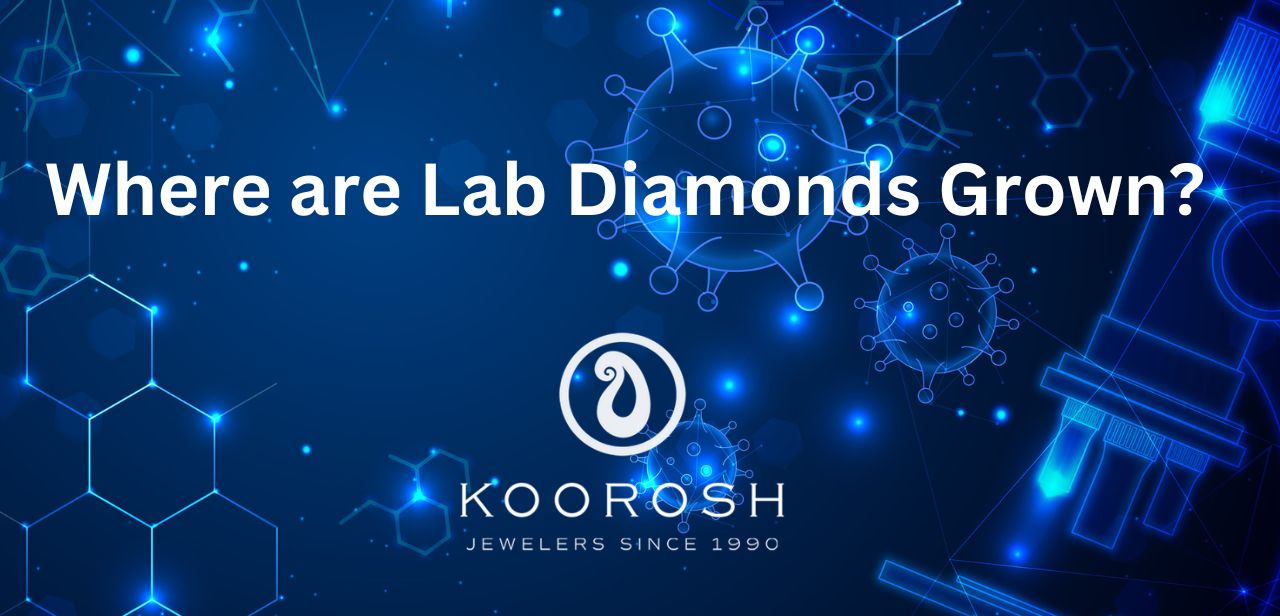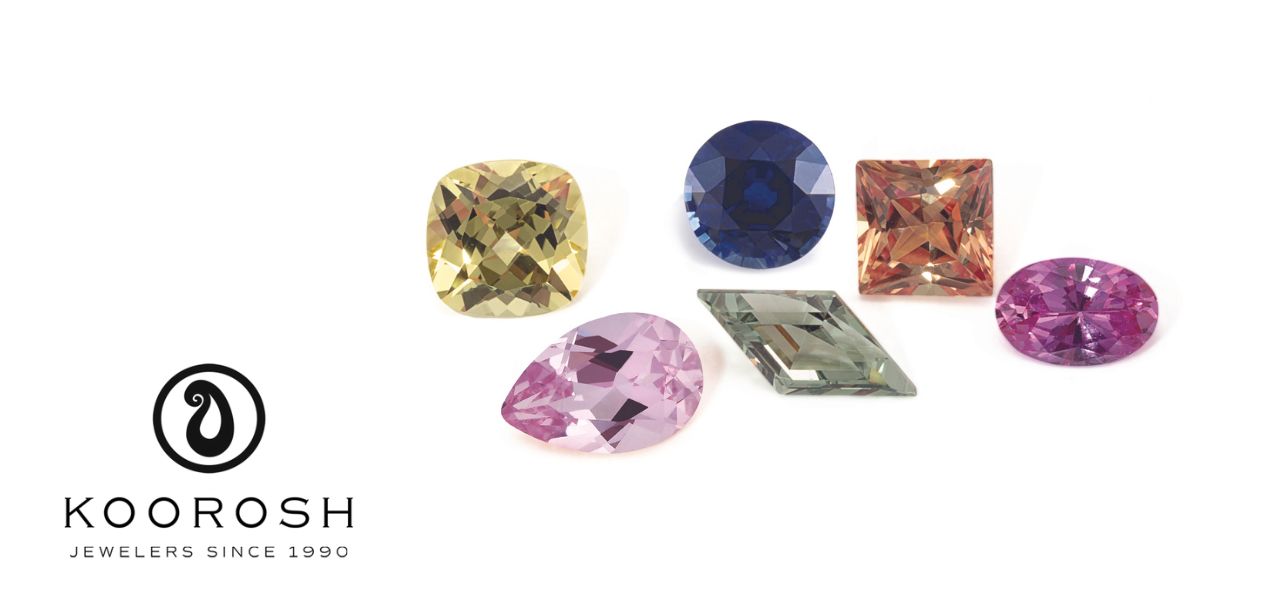Where are Lab Diamonds Grown?
Posted by Koorosh Daneshgar on Jan 19th 2023

Lab-grown diamonds are diamond crystals that are created in a controlled laboratory environment. These diamonds are virtually identical to natural diamonds in terms of their chemical, physical, and optical properties. The main difference between natural diamonds and lab-grown diamonds is the way they are formed. While natural diamonds are formed deep within the Earth's mantle over millions of years, lab-grown diamonds are created in a matter of weeks or months. Visit "How Long Do Lab-Grown Diamonds Take?" for more information.
Lab-grown diamonds are created using two main methods: High-Pressure High-Temperature (HPHT) and Chemical Vapor Deposition (CVD). The HPHT method mimics the natural process of diamond formation by applying high pressure and high temperature to a small diamond seed. The CVD method, on the other hand, uses a chemical reaction to deposit carbon atoms onto a substrate, which eventually forms into a diamond crystal.

Lab-grown diamonds are grown in a variety of locations worldwide, including the United States, Europe, and Asia. The United States is home to several major lab-grown diamond manufacturers, including Diamond Foundry, Apollo Diamond, and Scio Diamond. European countries like Belgium, Russia, and the United Kingdom are also major producers of lab-grown diamonds. In Asia, countries like China and India are becoming increasingly important players in the lab-grown diamond market.
One of the key advantages of lab-grown diamonds is that they are more environmentally friendly than natural diamonds. The mining and extraction of natural diamonds can have a significant impact on the environment, including deforestation, habitat destruction, and water pollution. In contrast, lab-grown diamonds are created in a controlled environment and do not require the destruction of natural habitats or the use of heavy machinery.
Another advantage of lab-grown diamonds is that they are generally more affordable than natural diamonds. Because lab-grown diamonds are created in a controlled environment, manufacturers have more control over the supply and can produce diamonds more efficiently, resulting in lower costs. This makes lab-grown diamonds an attractive option for consumers who want the beauty and durability of a diamond without the high price tag.
However, lab-grown diamonds are not without their own set of challenges. One of the biggest challenges facing the lab-grown diamond industry is the lack of standardization and regulation. Unlike natural diamonds, which are regulated by organizations like the Kimberley Process Certification Scheme, lab-grown diamonds are not subject to the same level of oversight. This can make it difficult for consumers to know exactly what they are buying and can lead to confusion and mistrust.
Another challenge facing the lab-grown diamond industry is the lack of public awareness. Many consumers are still not familiar with the concept of lab-grown diamonds and may not understand the difference between natural and lab-grown diamonds. This lack of awareness can make it difficult for lab-grown diamond manufacturers to reach their target market.

Despite these challenges, the lab-grown diamond industry is expected to continue growing in the coming years. As more consumers become aware of the environmental and financial benefits of lab-grown diamonds, demand for these diamonds is likely to increase. Additionally, as technology continues to improve, it is expected that the quality and affordability of lab-grown diamonds will continue to improve, making them an increasingly attractive option for consumers.
In conclusion, lab-grown diamonds are a viable alternative to natural diamonds, with virtually identical properties and a lower environmental impact. These diamonds are created in a controlled laboratory environment using methods such as High-Pressure High-Temperature (HPHT) and Chemical Vapor Deposition (CVD). Lab-grown diamonds are produced in various locations worldwide, including the United States, Europe, and Asia. While lab-grown diamonds offer several advantages such as affordability and environmental friendliness, the industry still faces challenges such as lack of standardization and regulation, and lack of public awareness. Overall, the lab-grown diamond industry is expected to continue growing in the coming years as technology improves and consumers become more aware of the benefits of lab-grown diamonds.
We'll help you to design your dream engagement ring without stress and spending countless hours searching for your perfect ring. All you need to do is click on "Free Consultation" to get started.

